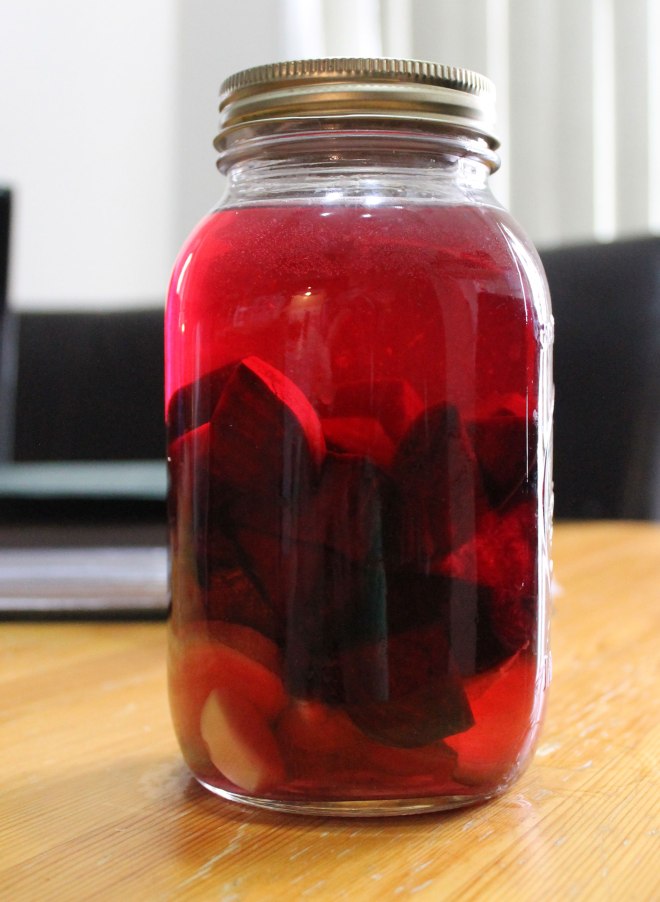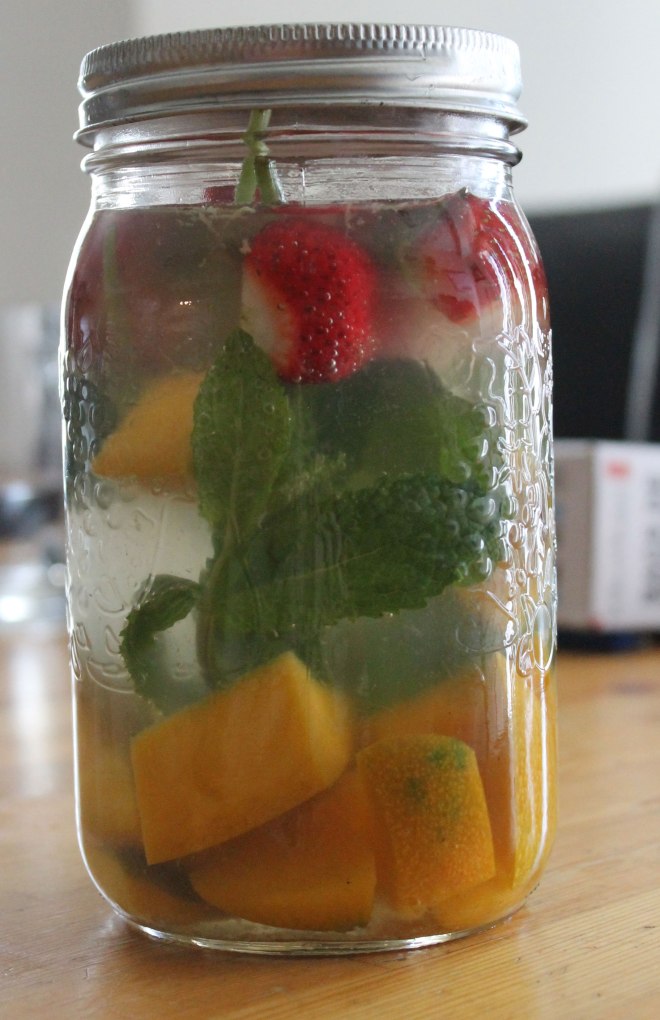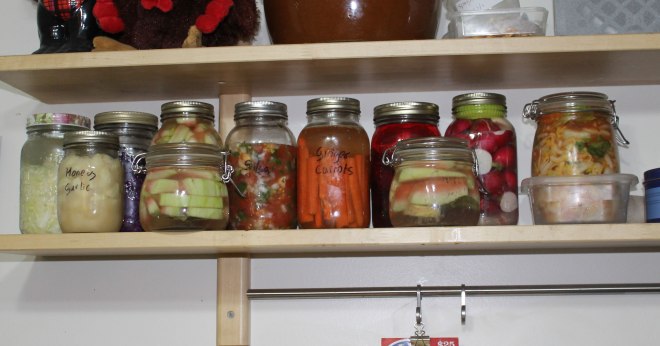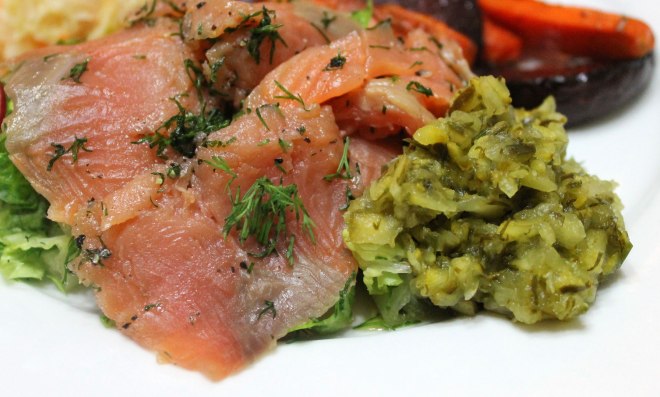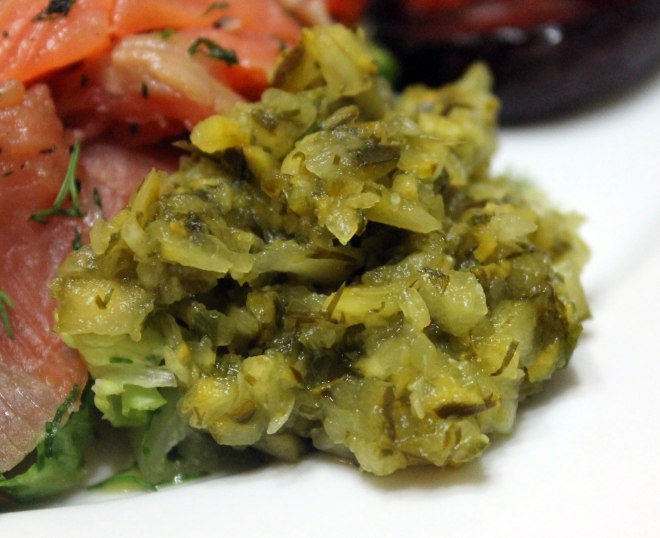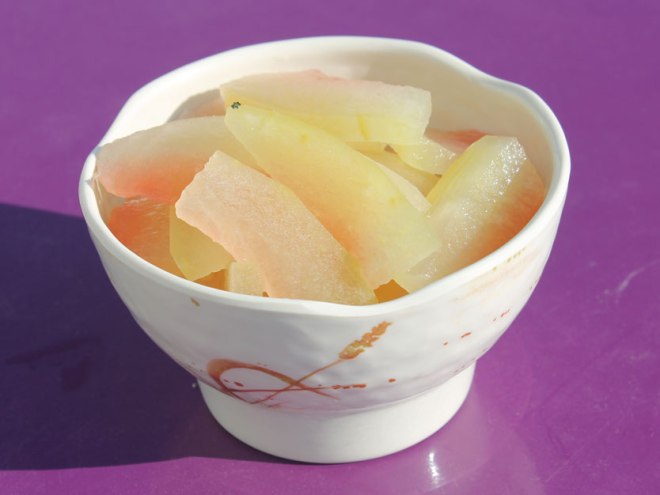This is another recipe in my cultured/lacto-fermented foods series.
And the best bit is that this is a 2-in-1 recipe.
Not only do you get a wonderful probiotic beverage (the Beet Kvass), you also end up with some lacto-fermented beets that can be used in salads or as a condiment to provide yet more probiotics in your diet.
I love Beet Kvass – it has a slightly sweet, slightly salt, earthy flavour that is full of beet.
When you sip it, you can feel that it is doing you some good!
Beet Kvass is a cleansing tonic, that is good for many systems of the body.
Sally Fallon in Nourishing Traditions says: “This drink is valuable for its medicinal qualities and as a digestive aid. Beets are just loaded with nutrients. One 4-ounce glass, morning and night, is an excellent blood tonic, promotes regularity, aids digestion, alkalizes the blood, cleanses the liver and is a good treatment for kidney stones and other ailments.”
In addition to the cleansing nature of kvass, the finished drink is full of beneficial enzymes and probiotic bacteria as a result of the lacto-fermentation process. As the beets ferment, the sugar and starch in the beets are converted to lactic-acid preserving the kvass and stopping it from going bad.
Regularly eating lacto-fermented vegetables, including beet kvass, will promote healthy gut flora, and greater absorption of nutrients from your food.
I add both garlic and ginger to my kvass for extra flavour and nutrition. If you don’t like them or you cannot handle them in your diet, it will work just as well without.
This is another fairly quick ferment, taking less than a week on the counter top, but it does benefit from a week or two in the refrigerator to allow the flavours to mellow and even out. It can be drunk straight off the counter however, but I think it is better to wait…
You do need dechlorinated water for this as chlorine will prevent the growth of the lactic-acid bacteria that ferment the beets.
The water you use can be dechlorinated in a number of ways – you can buy reverse osmosis filtered water or distilled water. You can run your water through a household filter that will remove the chlorine. You can leave it to stand on the counter-top for 24 hours, you can boil it for 20 minutes and then allow it to cool, or you can whir it in a blender for 5 minutes. These last 3 methods will remove chlorine from the water but they will not remove chloramine. Some municipalities have moved from using chlorine in their water supply to using chloramines. These cannot be removed from the water, so it is important that you contact your water provider and check. The city of Calgary does not use chloramines, so all of these methods work for me.
Beet Kvass and Lacto-Fermented Beets
Makes 1 quart-sized jar
- 3-4 large beets
- 1″ piece of root ginger
- 2-3 cloves of garlic
- 1 tbsp sea salt
- dechlorinated water
Take the beets and wash them well – there is no need to peel. Cut the beets into large chunks – I usually cut them into 8 wedges. Slice the root ginger into thin slices – again, no need to peel.
Place the ginger and garlic in the bottom of a quart sized mason jar and add the beets.
Mix the sea salt with the water to make a brine and pour this over the beets to within 1″ of the top of the jar.
Seal and stand at room temperature for 2-7 days. The ambient temperature will determine exactly how long the fermentation process will take. Check the kvass each day, removing the lid to allow any gas to escape.
After a couple of days, it is also a good idea to taste a little – the kvass is ready when it is a deep red colour and there are a few small bubbles working their way to the top. It should smell and taste earthy and salty and a bit like beets. If your home is very warm, it could ferment in as little as 2 days, during the winter or if your house is colder, it could take up to a week.
Store the kvass in the refridgerator. You can drink it straight away, but if you leave it for a couple of weeks, the saltiness will diminish and the flavours will keep getting better and better.
Some of the best kvass I have ever drunk was forgotten at the back of the fridge for around 8 weeks!
You can use the leftover beets to make a second batch of kvass – follow the directions above, using the beets, ginger and garlic, and adding more brine.
After the second batch of kvass, use the beets in salads or just eat them as a snack.
I love to grate the fermented beets and mix them with grated carrot and some green onion to make a fermented beet salad.
The Kvass can be drunk just as it is as a cleansing probiotic tonic. It can also be added to salad dressings, soups or used as an interesting addition to a cocktail (it tastes wonderful when added to a Caesar!)
Shared at Gluten Free Fridays #98
Shared at Paleo AIP Recipe Roundtable #34
Shared at Homestead Blog Hop


